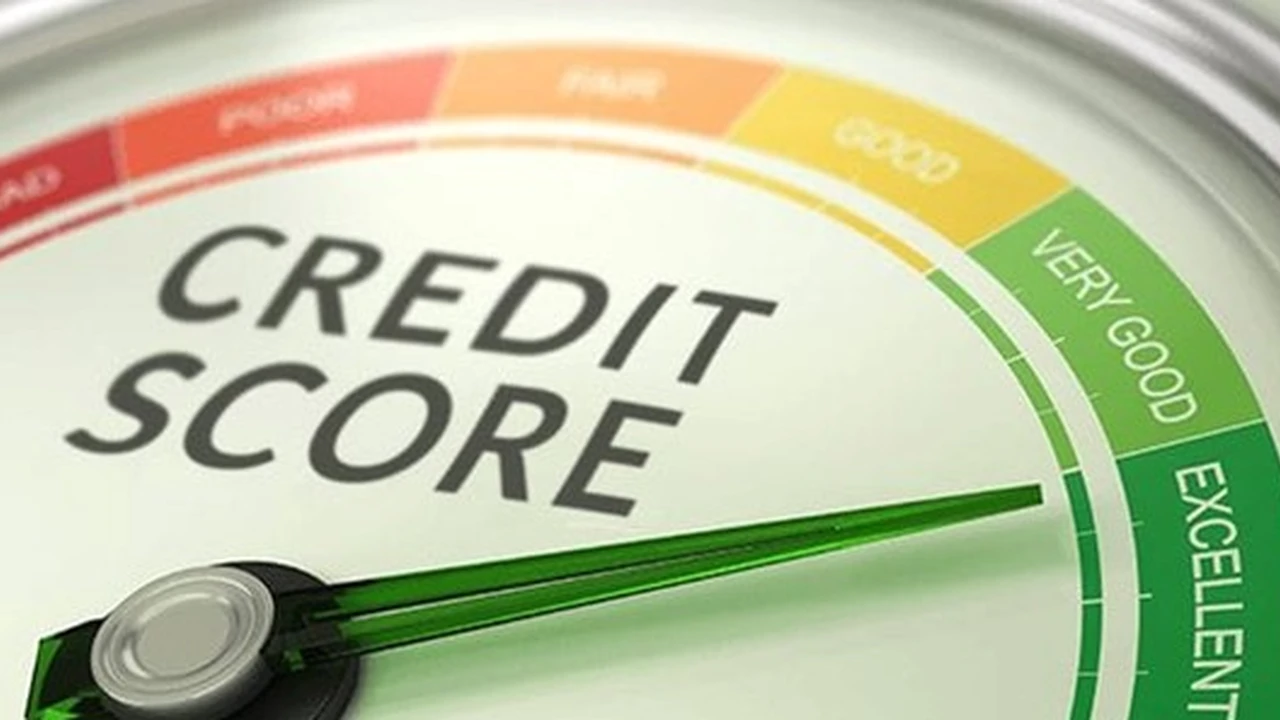Improving Your Credit Score: Saving on Car Insurance

Understanding the Credit Score Connection to Car Insurance Premiums
So, you're looking to save some cash on car insurance, huh? Smart move! One of the biggest factors that insurance companies look at – and one that many people don't even realize – is your credit score. Yep, that little number that determines whether you get approved for a loan or a credit card also plays a pretty significant role in how much you pay to insure your ride. Why? Insurance companies argue that a good credit score indicates responsible financial behavior, which they correlate with responsible driving habits. Essentially, they believe that people who manage their money well are less likely to file claims.
Think of it this way: a low credit score can signal to insurers that you're a higher risk. This risk translates into higher premiums. On the flip side, a solid credit score can unlock lower rates and save you a serious chunk of change. The difference can be hundreds, even thousands, of dollars per year!
Building and Improving Your Credit Score The Key to Lower Insurance Rates
Alright, let's get down to brass tacks. How do you actually boost that credit score and start reaping the rewards of cheaper car insurance? It's not magic; it takes time, effort, and a little bit of strategy. Here’s a breakdown of the key areas to focus on:
Payment History A Cornerstone of Your Credit Score
This is the big one. Payment history usually makes up the largest percentage of your credit score. Always, *always*, pay your bills on time. Set reminders, automate payments – do whatever it takes to avoid late payments. Even one late payment can ding your score and stick around for years.
Pro Tip: If you’ve missed payments in the past, try to catch up as quickly as possible. Contact the creditor and explain the situation. Sometimes they'll be willing to work with you. And once you're current, make sure you stay that way!
Credit Utilization Keeping Balances Low
Credit utilization is the amount of credit you're using compared to your total available credit. For example, if you have a credit card with a $1,000 limit and you're carrying a balance of $300, your credit utilization is 30%. Experts generally recommend keeping your credit utilization below 30%, and ideally below 10% for the best results.
How to lower your credit utilization:
- Pay down your balances: This is the most direct way to improve your utilization.
- Increase your credit limits: Contact your credit card companies and ask for a credit limit increase. Just be careful not to spend more!
- Open a new credit card: This will increase your overall available credit, lowering your utilization ratio. Again, be responsible!
Length of Credit History The Power of Time
The longer you've had credit accounts open and in good standing, the better. This shows lenders that you have a proven track record of managing credit responsibly. Don't close old credit cards just because you don't use them anymore. Keeping them open (as long as there are no annual fees) can help your credit score.
Credit Mix Showing You Can Handle Different Types of Credit
Having a mix of different types of credit – credit cards, installment loans (like car loans or mortgages), etc. – can also boost your score. It demonstrates that you can manage different types of debt. However, don't take out loans just to improve your credit mix! Focus on managing the credit you already have responsibly.
New Credit Opening Accounts Wisely
Opening too many new credit accounts in a short period of time can actually hurt your score. Each application triggers a hard inquiry, which can temporarily lower your score. Be selective about the credit accounts you apply for.
Specific Products and Strategies to Improve Your Credit
Okay, let's get into some concrete examples of products and strategies you can use to improve your credit and, ultimately, save on car insurance.
Secured Credit Cards A Great Way to Build Credit from Scratch
If you have little to no credit history, a secured credit card can be a great starting point. With a secured card, you provide a cash deposit as collateral, which serves as your credit limit. You use the card like a regular credit card, making purchases and paying them off on time. After a period of responsible use (typically 6-12 months), you may be able to graduate to an unsecured credit card and get your deposit back.
Product Recommendations:
- Discover it Secured Credit Card: This card often offers rewards (like cashback) on purchases, which is rare for secured cards. It also has a path to graduation to an unsecured card. Deposit amounts typically start around $200.
- Capital One Secured Mastercard: Another popular option with a low minimum deposit (sometimes as low as $49, depending on your creditworthiness). It also reports to all three major credit bureaus.
Usage Scenario: Use a secured credit card for small, everyday purchases like gas or groceries. Set up automatic payments to ensure you never miss a payment. Keep your balance low (ideally below 10% of your credit limit).
Credit Builder Loans Small Loans Designed to Boost Your Score
Credit builder loans are another option for building credit, particularly if you don't want to use a credit card. With a credit builder loan, you borrow a small amount of money (typically a few hundred to a few thousand dollars), but you don't receive the funds upfront. Instead, the lender holds the money in a savings account or certificate of deposit. You make monthly payments on the loan, and the lender reports your payments to the credit bureaus. Once you've paid off the loan, you receive the funds (plus any interest earned).
Product Recommendations:
- Self Lender: Self Lender offers credit builder loans starting at around $25 per month. They report to all three major credit bureaus.
- SeedFi: SeedFi offers a Borrow & Grow plan that combines a credit builder loan with a savings account.
Usage Scenario: Sign up for a credit builder loan with a payment you can comfortably afford. Make sure to set up automatic payments to avoid missing any payments. Consider it a way to save money while also building your credit.
Becoming an Authorized User Leverage Someone Else's Good Credit
If you have a friend or family member with a credit card in good standing, you could ask them to add you as an authorized user on their account. As an authorized user, you'll receive a credit card in your name, and the account's payment history will be reported to your credit report. This can be a quick way to boost your credit score, but it's important to choose someone who is responsible with their credit.
Important Considerations:
- Make sure the primary cardholder is responsible with their credit. Their missed payments will negatively impact your credit score.
- Talk to the primary cardholder about spending limits and responsibilities.
- Not all credit card companies report authorized user activity to the credit bureaus, so check with the issuer beforehand.
Credit Monitoring Services Keeping an Eye on Your Credit Report
Credit monitoring services can help you track your credit score and identify any potential problems, such as errors or fraudulent activity. These services typically provide you with alerts when there are changes to your credit report, such as new accounts opened, inquiries, or negative items reported.
Product Recommendations:
- Credit Karma: A free service that provides credit scores and reports from TransUnion and Equifax. It also offers credit monitoring and personalized recommendations for improving your credit.
- Credit Sesame: Another free service that provides credit scores and reports from TransUnion. It also offers credit monitoring and identity theft protection.
- Experian CreditWorks Premium: A paid service that provides daily credit reports and scores from all three bureaus, plus ID theft monitoring and alerts. Cost is approximately $24.99/month.
Usage Scenario: Sign up for a credit monitoring service (even a free one) to keep an eye on your credit report. Review your report regularly to identify any errors or fraudulent activity. Address any issues promptly.
Comparing Credit Improvement Products and Strategies
Let's break down a quick comparison of the products we just discussed, highlighting their pros, cons, and typical costs.
| Product/Strategy | Pros | Cons | Typical Cost |
|---|---|---|---|
| Secured Credit Card | Good for building credit from scratch, may offer rewards. | Requires a cash deposit, may have higher interest rates. | Deposit amount (usually $200-$500), potential annual fees. |
| Credit Builder Loan | Helps build credit while saving money. | You don't receive the funds upfront, may have interest charges. | Interest charges, potential origination fees. |
| Authorized User | Quick way to boost credit, no cost to you. | Relies on the primary cardholder's responsible credit use, not all issuers report. | None (unless the primary cardholder charges you). |
| Credit Monitoring Service | Helps you track your credit and identify potential problems. | May require a subscription fee for more advanced features. | Free options available, paid subscriptions range from $10-$30/month. |
Shopping Around for Car Insurance After Improving Your Credit
Once you've made progress in improving your credit score, it's time to shop around for car insurance quotes. Don't just stick with your current insurer! Insurers use different formulas and weigh credit scores differently. Getting quotes from multiple companies can help you find the best rate.
Tips for shopping around:
- Get quotes from at least three different insurance companies.
- Compare the coverage options and deductibles offered by each company.
- Ask about discounts you may be eligible for, such as safe driver discounts, multi-policy discounts, or student discounts.
- Be honest about your driving history and any claims you've filed in the past.
- Don't just focus on the price. Consider the reputation and customer service of each company.
Specific Car Insurance Companies and How They View Credit
While it's impossible to say definitively how each company weighs credit, some insurers are known to place more emphasis on credit scores than others. Here's a general overview, but remember to always get a quote to see your specific rate.
- Companies that *may* heavily weigh credit: Geico, Progressive, Allstate, State Farm
- Companies that *may* be more forgiving of lower credit: Some smaller regional insurers, companies that focus on high-risk drivers. (These vary greatly by location)
Disclaimer: This is just a general guideline. The best way to find out how a specific company views your credit is to get a quote from them directly. Also, keep in mind that in some states, it is illegal for insurance companies to use credit scores to determine premiums.
Long-Term Credit Management for Continued Savings
Improving your credit score isn't a one-time fix. It's an ongoing process. Continue to practice responsible credit habits, such as paying your bills on time, keeping your credit utilization low, and monitoring your credit report regularly. By maintaining a good credit score, you'll not only save money on car insurance but also unlock better rates on loans, mortgages, and other financial products.
:max_bytes(150000):strip_icc()/277019-baked-pork-chops-with-cream-of-mushroom-soup-DDMFS-beauty-4x3-BG-7505-5762b731cf30447d9cbbbbbf387beafa.jpg)






